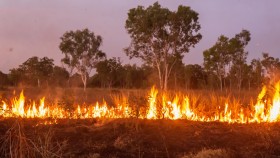ANU experts comment on Paris Agreement and COP22 Climate Talks
The Paris Agreement on climate change will enter into force tomorrow, ahead of the United Nations Framework on Climate Change Conference of the Parties (COP22) meeting in Marrakesh, which begins on Monday 7 November 2016.
Australia is yet to ratify the Paris Agreement, which aims to keep global warming to below 2 degrees Celsius.
The Climate Change Institute at The Australian National University (ANU) will send a delegation of experts to the conference in Marrakesh.
_______________________________________________________________
Adjunct Professor Howard Bamsey
Former Australian Government climate negotiator
ANU Regulatory Institutions
Executive Director, Green Climate Fund
“The momentum of the Paris Agreement continues to gather pace – for possibly the first time ever the intersessional meetings of the UNFCCC did not see concerted pushback on progress made at the COP.
The Montreal Protocol and International Civil Aviation Organization have agreed on important climate-friendly actions; and entry into force of the Paris Agreement will occur years before most observers expected it. The Kyoto Protocol took seven years.
The Moroccan Government has a good hand to promote implementation of the Paris Agreement. But the negotiating agenda is extremely full and complex, so nothing as dramatic as a Paris outcome is possible.
The need for agreed interpretation of many parts of the Paris Agreement means that differences and logjams will show up daily. While any of these sparks could catch fire, skilful chairing should avoid explosions. But ultimately, continued progress on the new model of universal climate action depends on developing countries being satisfied that the developed world is meeting its obligations on financial assistance.
The biggest risk? Easily, the result on 8 November.”
Dr Luke Kemp
Lecturer in Environmental and Climate Policy
ANU Fenner School of Environment and Society
"The Marrakesh conference will be important for the future of the Paris Agreement, but most eyes will turn towards an event that is even more critical for international climate policy: the US election. A Trump presidency, or a poor start in Marrakesh, could mark the end to the post-Paris honeymoon.
Not a great deal can be expected from Marrakesh. Detailed rules on the review process and market mechanisms will take time and care to develop. However, now is the time when the general shape of things will take form and when new ideas can easily enter the negotiations.”
Professor Mark Howden
Director, ANU Climate Change Institute
“The Marrakesh COP is an opportunity for developed nations to demonstrate leadership and commitment to deliver the goals set out in the Paris Agreement. Energy and expectations will be high due to the Paris Agreement entering into force a few days earlier, but there are risks that various processes will get bogged down in different positions on the details needed to operationalise the agreement.
Australia could play a particularly constructive role on the topics of capacity building, technology transfer and climate adaptation where we are well positioned to enhance climate adaptation and mitigation outcomes for other nations in our region.”
Dr Imran Habib Ahmad
Honorary Associate Professor, Development and Climate Change
ANU Fenner School of Environment and Society
“COP22 represents a significant moment for governments around the world to honour their commitments and start delivering on the ambitions of the Paris Agreement. National climate pledges need to be reviewed to limit the global temperature rise to 2 degrees Celsius above pre-industrial levels, and this requires aggressive climate action. It will be necessary to ensure that the tools and procedures to reach the climate targets are in sync with the climate targets of the Paris Agreement.
Climate finance will be critical for developing countries, and it will be important to demonstrate that the goals set for 2020 are within reach and measures are in place to reach the target of $100 billion per year.”











